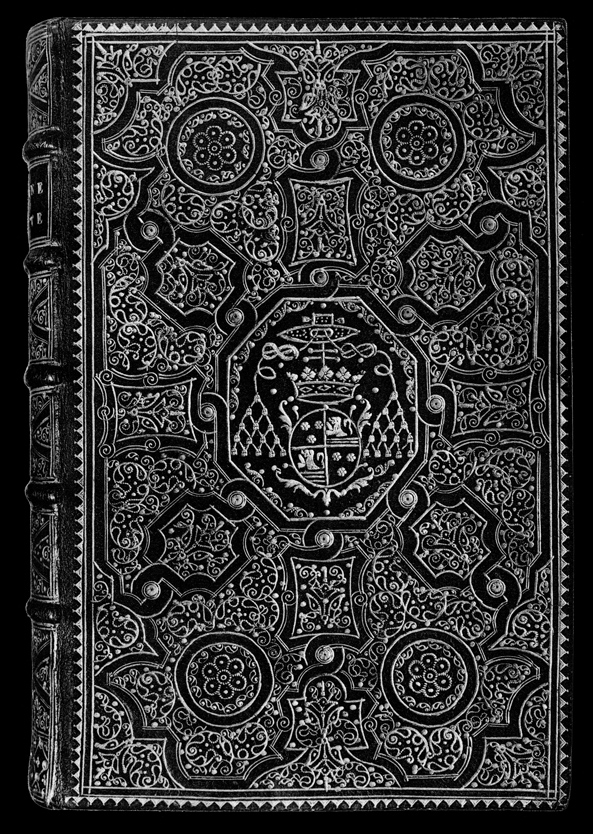

| The binding shown above is from an auction catalogue entitled: LA BIBLIOTHÈQUE DE FEU ÉDOUARD RAHIR - Quatrieme Partie Paris: Francisque LEFRANÇOIS, 1936. This is item 1128 in the fourth volume of the six volume set. We have already looked briefly at this binding on another page. Here we are going to examine it again but much more closely comparing it with the 1728 fanfare example on the previous page. Firstly I should however point out that this binding was not recognized by Francisque LEFRANÇOIS as being the work of Padeloup le Jeune, as we can see by the item description, shown below. |

| One can only assume that G. D . Hobson's 1935 publication Les reliures a la fanfare an exhaustive study of "fanfare" bindings, was not widely known. In that work (page 65) Hobson points out numerous Padeloup examples, although he does not reproduce any of these bindings. |
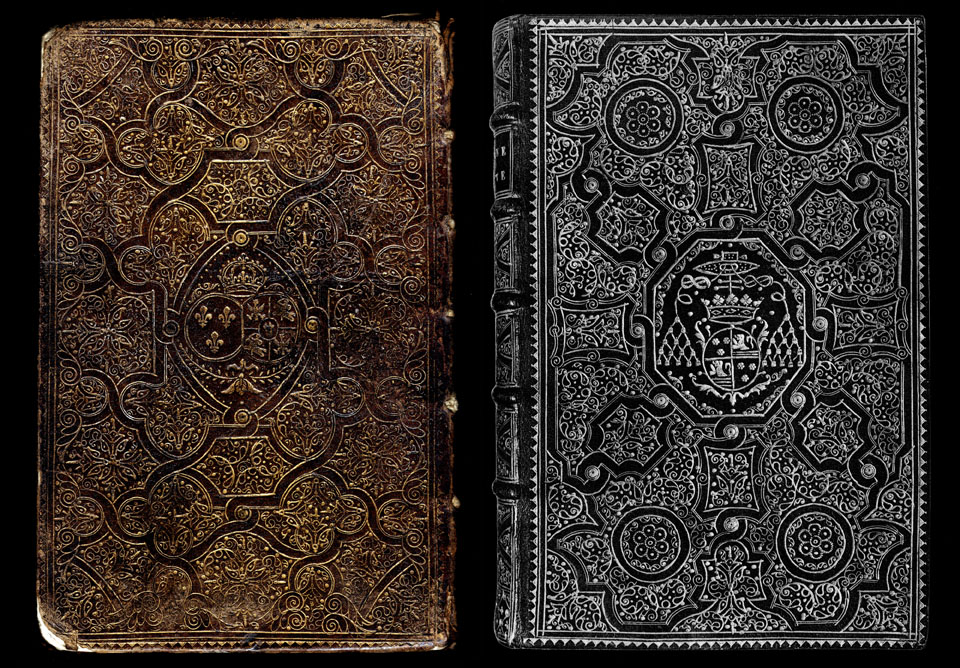
| In Comparative Diagram 1, I compare two 1728 Padeloup fanfare bindings, these have been reproduced at aproximately the same scale as I do not have exact measurements for the 1128 example. At first these binding look quite different, however as we are going to see, there are some important similarities, that suggest that these bindings were probably made around the same period. The most important observation is the most difficult to observe as we have but a small amount of the 1128 spine showing in this reproduction. |
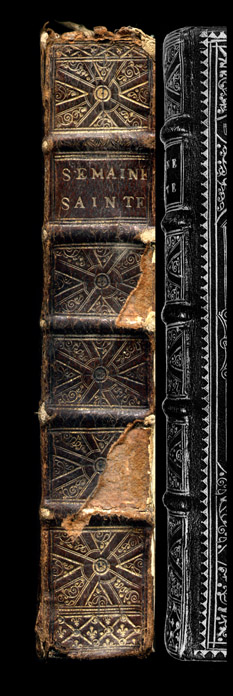
| In the enlarged image of this diagram we can see that the design of the spine panel strap work is probably identical. The finishing of the tail section is also obviously very similar and a sort of signature that can be observed on many Padeloup bindings. |
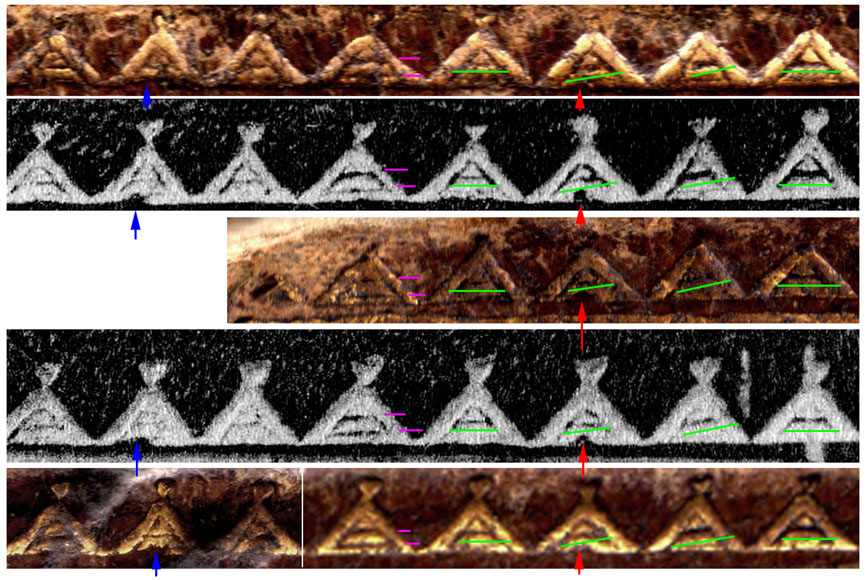
| The above diagram was constructed by first extracting all of the useful ROLL imprints and assembling them together in one diagram in an attempt to find matching characteristics or flaws. After locating these particularities, I have cut and pasted them together to make the above comparative diagram, which then shows not only the repetition of these characteristics, but that these same flaws can be found on both bindings. I noted previously that this ROLL is not found on any other of the fanfare examples, thus to find two bindings with it, may be very significant. |
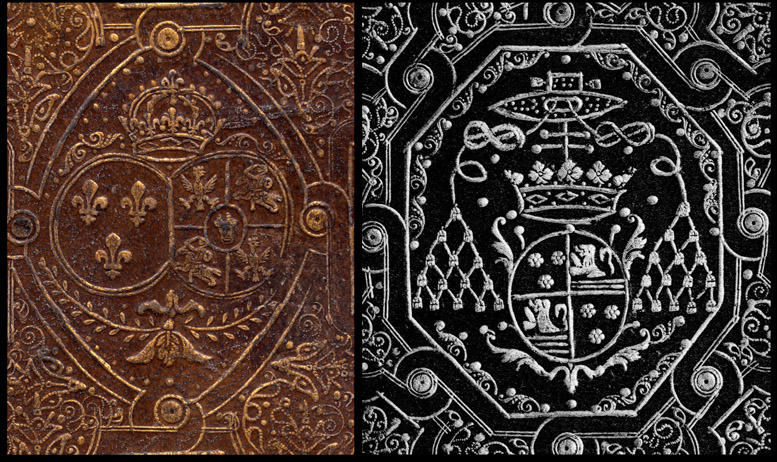
|
While we could go into looking at all the individual tool imprints that are shared by these two bindings, I would like to firstly point out a detail which I find rather amazing, and that is that both of these bindings have been decorated with hand made armes. If we pause for a moment to consider who these arms belonged to, Cardinal de Fleury, I am certain that some readers will not be aware of the importance of this fact. I myself had completely forgotten this part of history, fortunately it can now be found in an instant on wikipedia: "In 1726, the king (Louis XV), who was now sixteen and had since his marriage shown a new health and authority, dismissed the duc de Bourbon, who was extremely unpopular and was preparing a war against Spain and the Holy Roman Empire. As his replacement he chose his old tutor, Cardinal de Fleury, to serve as first minister. From 1726 until his death in 1743, Cardinal de Fleury ruled France with the king's assent" Cardinal de Fleury, was therefore by the year 1726 and afterwards the most powerful man in France, how then, can we imagine that Padeloup, prepared Fleury's armes from scratch? Researching this question a bit further we come to an even more startling example of Padeloup's home made arms, see below a 1726 Padeloup version of the arms of Louis XV. |
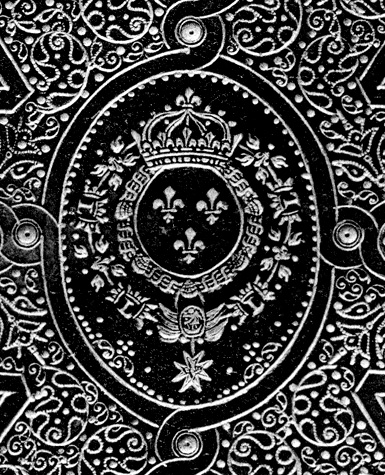
| Go to Digital Alchemy | return to the home page of cyclopaedia.org |